Art That Unnerves and Illuminates
Story by Matthew St. Amand
A visit to Stephen Gibb’s website/online gallery is like a stroll through a nightmare carnival of leering faces—some smiling maniacally, some in terror—where the observer sees how characters from fairy tales and nursery rhymes spend their time off.
You wouldn’t want to meet Stephen’s vision of Tweedle Dum in a park after sunset. In this world, Humpty Dumpty may have deserved his great fall. And the dish running away with the spoon might be just as well.
Born and raised in Amherstburg, trained as a visual artist at the University of Windsor, Stephen is quick to reassure people that he’s just an ordinary guy. This is probably true.
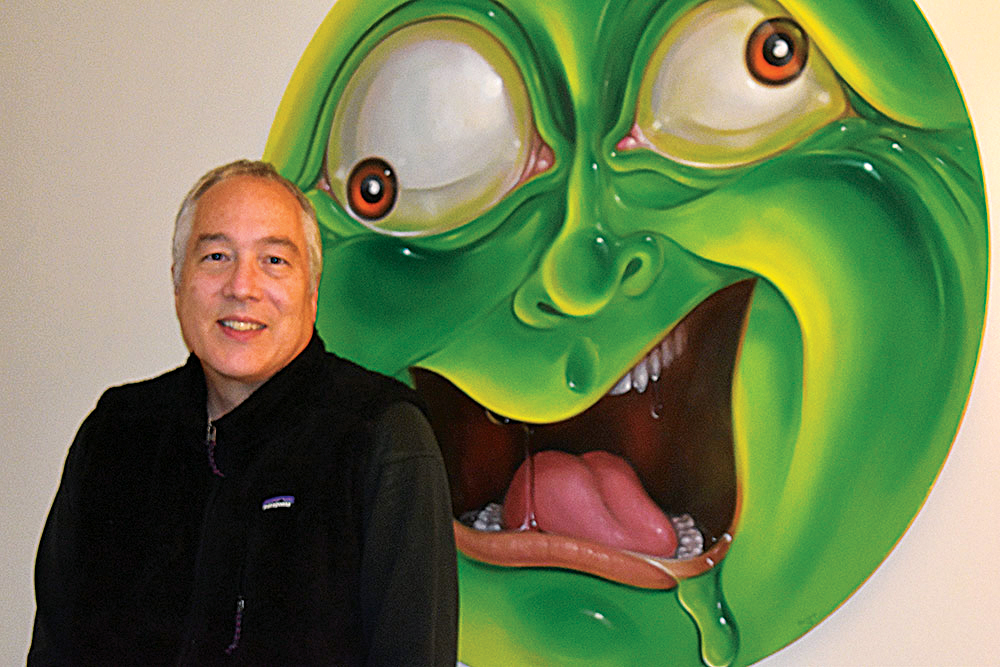
Although his art may be a sucker punch to certain observers, it’s among the sanest, visionary work around. There is no way to avoid experiencing an immediate, visceral response when viewing it.
The easy label for Stephen’s paintings is “surrealism”. It’s not inaccurate, but it’s also not complete. When pressed to categorize his work, Stephen describes it as “existential editorial cartoon realism” or “Bubblegum Surrealism”.
Stephen offers a bit more help: “If you see my paintings as an amalgamation of the freedom and madness of surrealism, the humour of Mad magazine, the hyperbolic insanity of hot rod artist ‘Big Daddy’ Roth, the irony and morality of the Twilight Zone, the crazy colour and illogic of psychedelic art, the chaos and wonder of Bosch and Bruegel and the tidy logic and storytelling of Norman Rockwell… then it makes perfect sense.”
Is he trying to make a statement with his work?
“Of course,” Stephen says. “I use the language of cartoons, pop art and surrealism to convey a subtly-coded message with latitude for interpretation.”
He acknowledges that some people are put off by that, thinking he is teasing them, or trying to pull one over on them. Others connect instantly with it.
Stephen’s paintings are so striking and singular, they strain a writer’s powers to describe them. His work is filled with references to time and space, history, pre-history, psychology, science, fast food, pop culture. They are populated by a variety of bastardized leering, frightened, crazed happy faces and characters from nursery rhymes and fairy tales, and other lost souls who crossed his mind in that moment of creation. The works are stunning in their detail. Their titles are essential components—no modernist “Untitled” among them. And one would guess that whole treatises could be written about the meaning behind any single painting.
Inspiration for his work often derives from very literal, mundane sources, such as a phrase or idiom.
“For instance, I have a piece titled ‘Caught’,” Stephen explains, referring to his 2018 painting. “The images play off various expressions relating to being caught: ‘Caught red-handed’, ‘Caught with your hand in the cookie jar’, ‘Caught with your pants down’, ‘Like a deer caught in headlights’, and so on…”
His painting “Last Days of the Plague” (2020) was inspired by the COVID-19 outbreak.
“It comes out of the situation we have all endured for the past eight months,” he says.
“I played with the idea of contamination and plague. I combined that with the carefree carelessness people have exhibited by not wearing masks, not abiding by certain restrictions. The old timey diving suit is an iconic image of someone trying to distance himself, protect himself, but in this case he is compromised by the piranha biting his leg.”
One recurring character in Stephen’s work is Humpty Dumpty: “He is my go-to guy. Being an egg, he represents the frailty of the human condition.”
There have been a few “eureka” moments in Stephen’s development as an artist.
First among them, at age eleven, was his discovery of the work of Hieronymus Bosch, a Dutch artist who lived 1450 – 1516. Bosch is known for his vivid, hyper-detailed, grotesque paintings, “Garden of Earthly Delights”, among others.
Another such epiphany occurred about fifteen years ago when Stephen realized he needed to invest his characters with more exaggerated emotions. “Once I did that, it opened the doors for me,” he says. “My work was finally communicating what I wanted—an over-the-top, hyperbolic emotion.”
Stephen sells a fair number of his paintings. “My work has been collected by folks from around the globe and I seem to be regularly shipping pieces here and there.
My work is also carried by the St. Germain Gallery in Toronto.”
Other career highlights include showing work in several exhibits in the Los Angeles area (including west Hollywood). The first of which was curated by Mark Ryden, the so-called “godfather of pop surrealism”. In 2018, Stephen was commissioned to create artwork for rapper Trippie Redd’s album Life’s a Trip.
Stephen describes the physical process of creating his art on his website: “The medium is the method, which is a faithful deployment of oil paint using traditional oil painting techniques, such as glazing and the occasional dalliance into chiaroscuro. The richness achieved by layers of thinned oil paint on wood panels always adds an interesting luminous vitality to the final piece.”
Now, we all have the secret. Not quite. The longest Stephen has spent creating a painting was close to a month. In general, a mid-sized work of, say, 3’ x 2’, can be completed in two weeks.
Responses to his work range from uncomfortable, sidelong glances to outright laughter.
“Everyone responds in their own way,”he says. “I get the most satisfaction from
laughter. If someone laughs, it’s clear they’ve understood what I have done.”
All his work is worth checking out, but if there is one piece that encapsulates his
vision, it is his 2019 painting “The Empty Visual Discourse of a Reluctant Pop Surrealist”. The central character suckles from a human/hybrid monstrosity. Off to the left are four round, coloured heads, that represent advertising—each mocking the central figure with vastly differing facial expressions: fear, mirth, malice and trauma. Even viewing it while seated on one’s living room couch, it’s something that makes the observer take a step backward.
“The painting’s about how consumerism leaves you empty,” Stephen explains. “There is no fulfillment, just fleeting, insubstantial satisfaction.”
To glimpse the madness and genius of Stephen Gibb, check out the gallery on his website www.stephengibb.com.


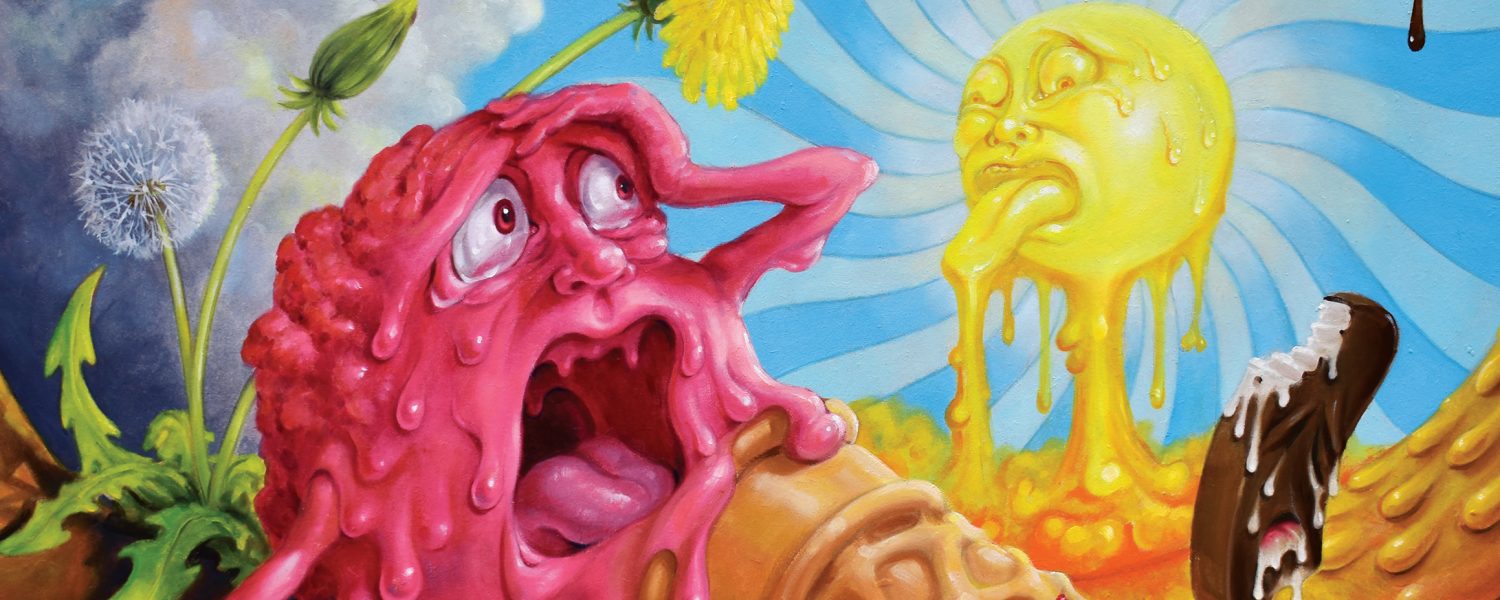
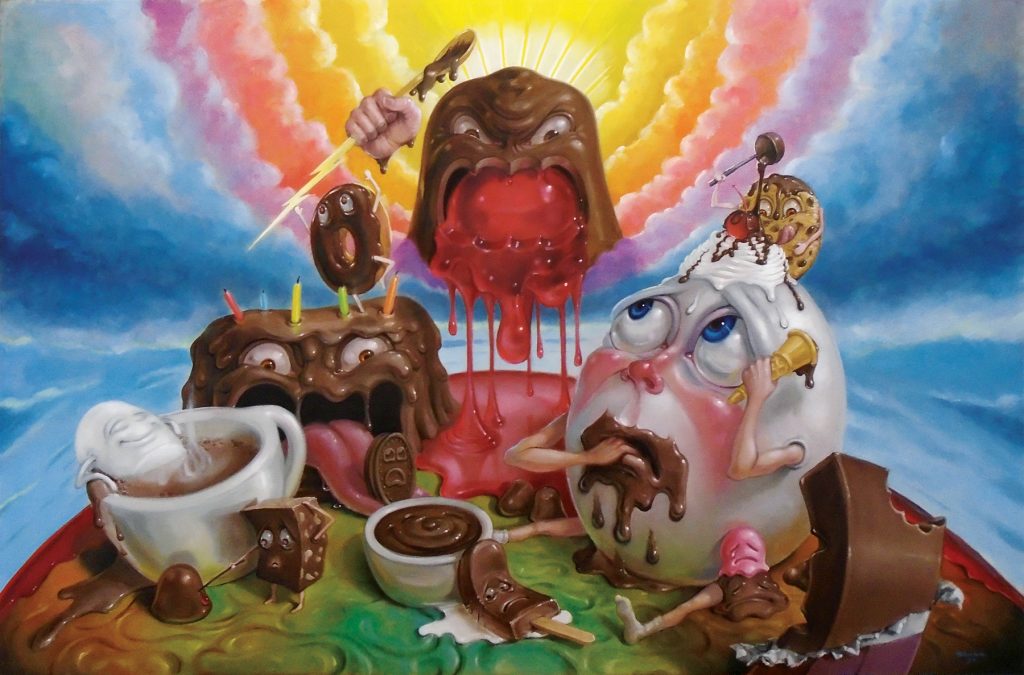
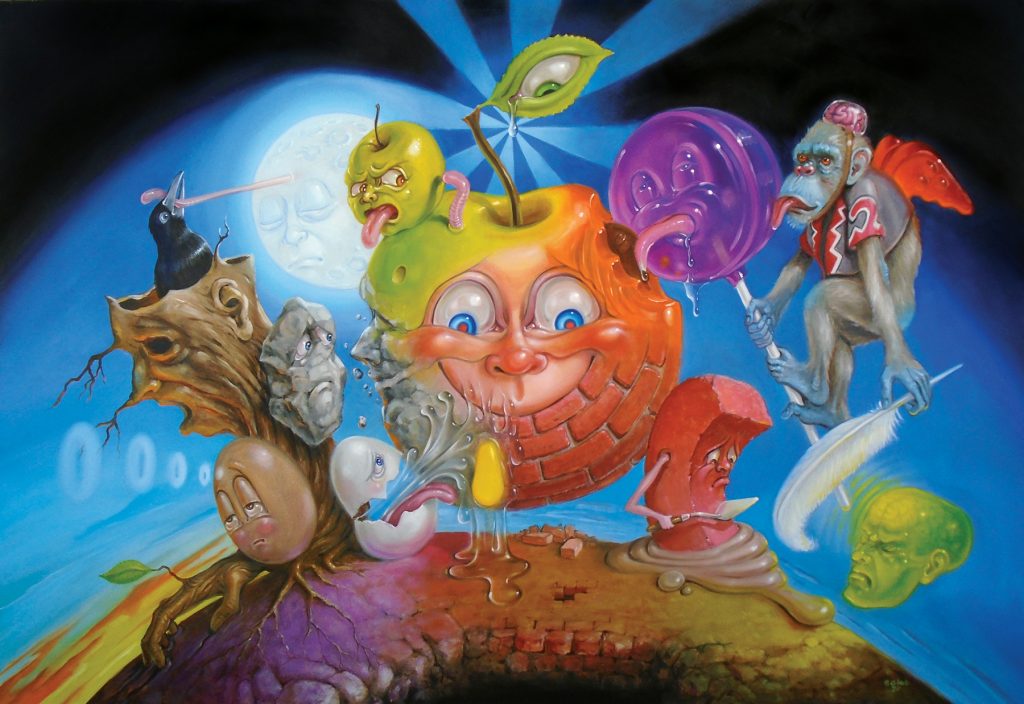
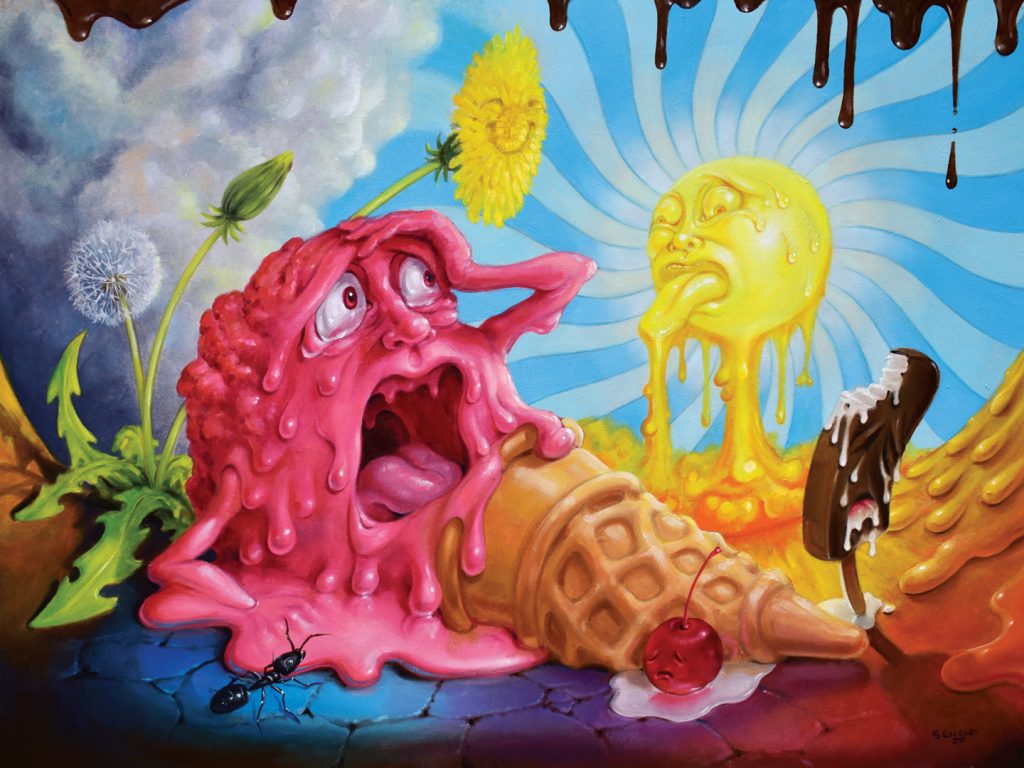
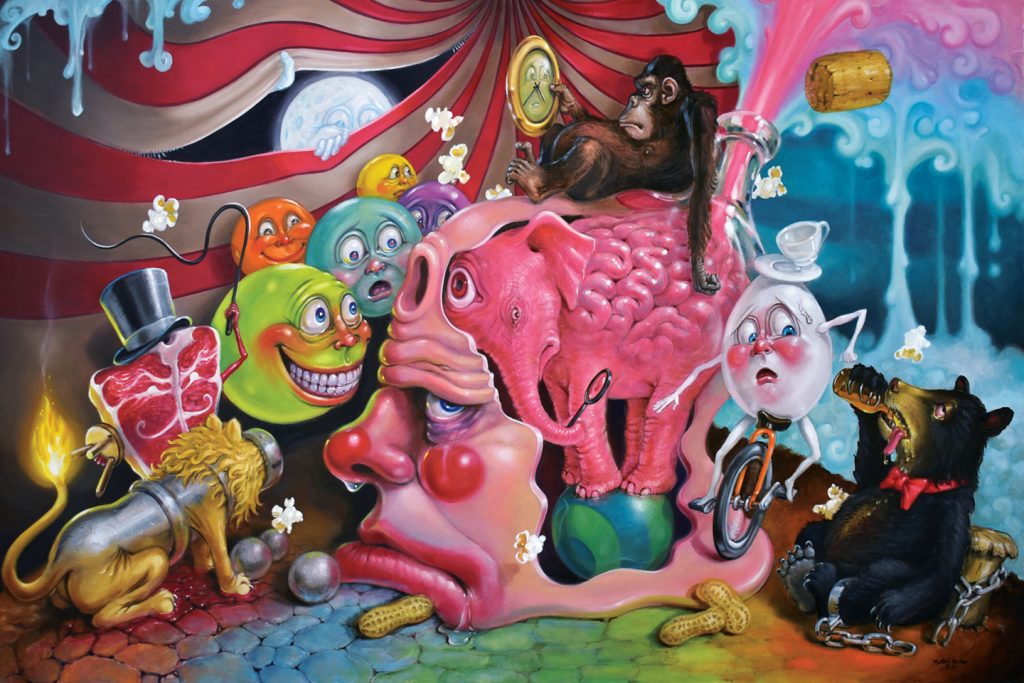
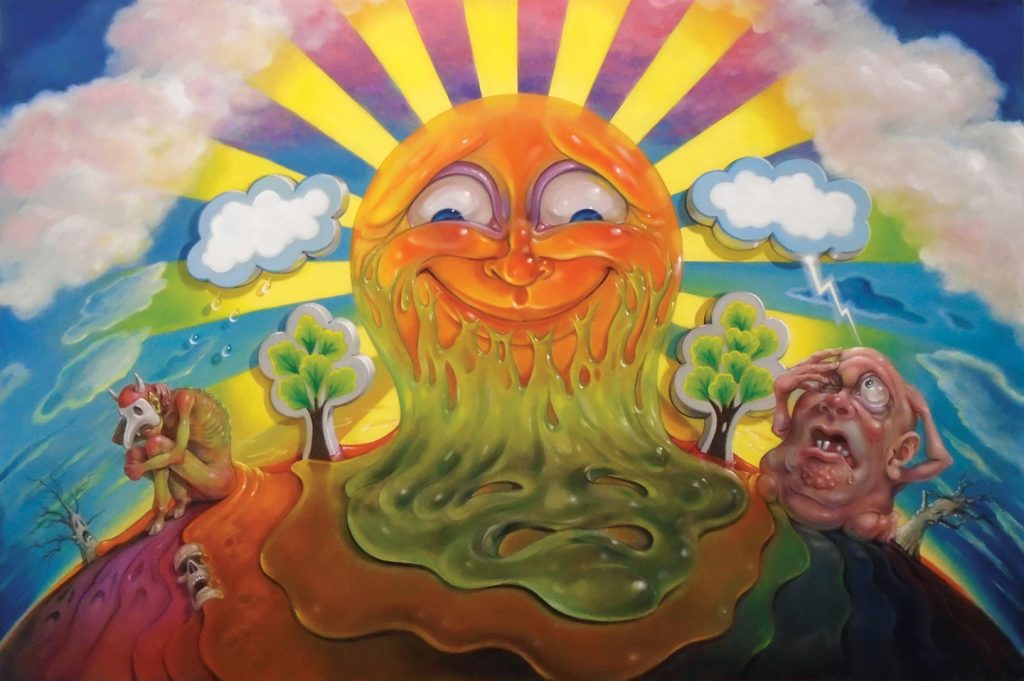
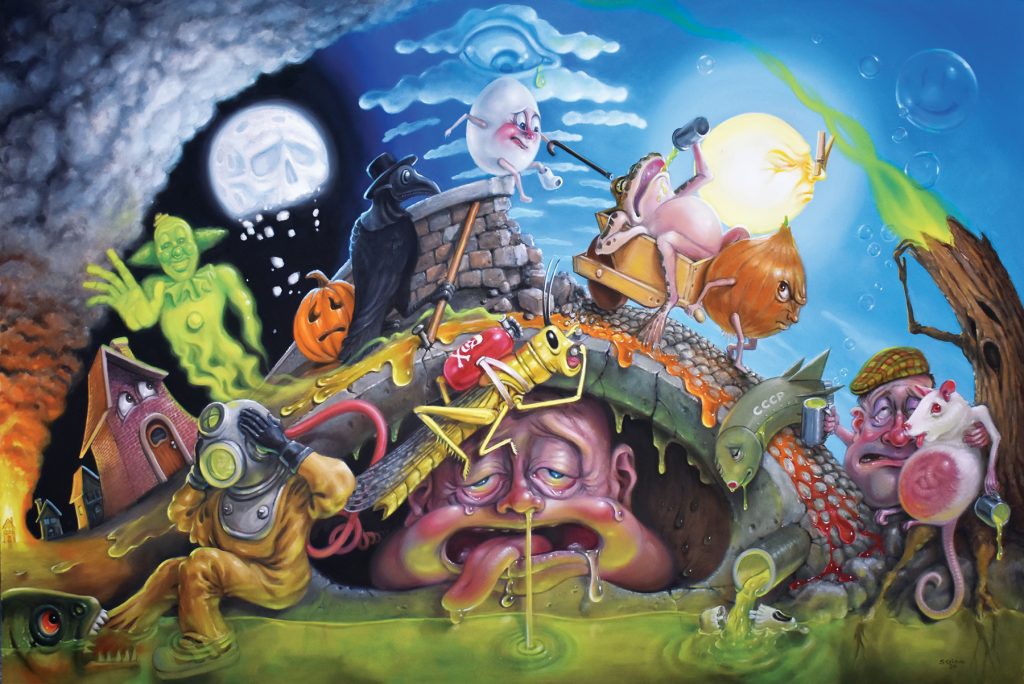
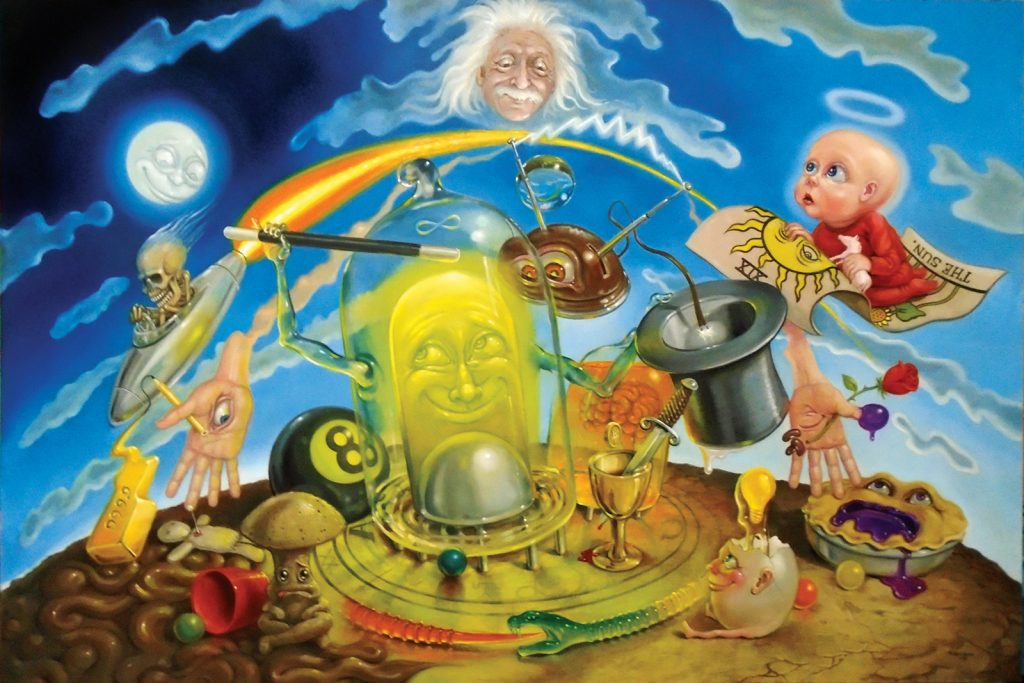
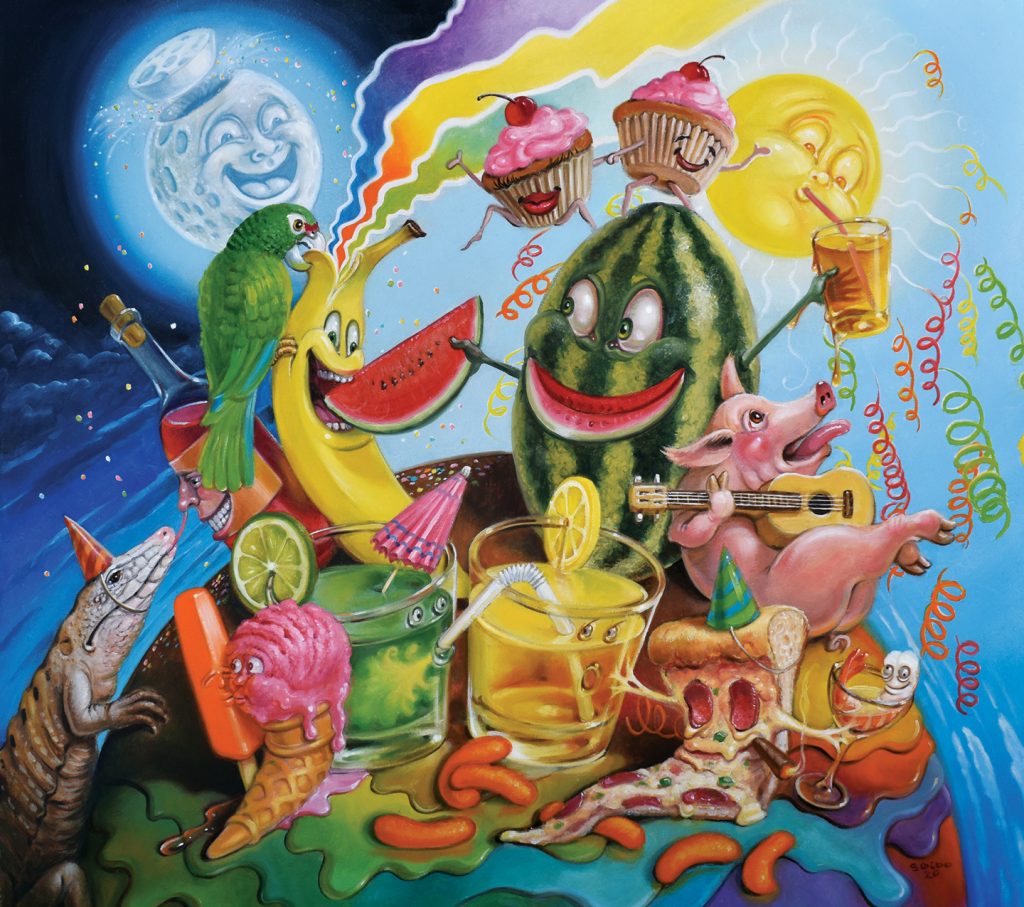
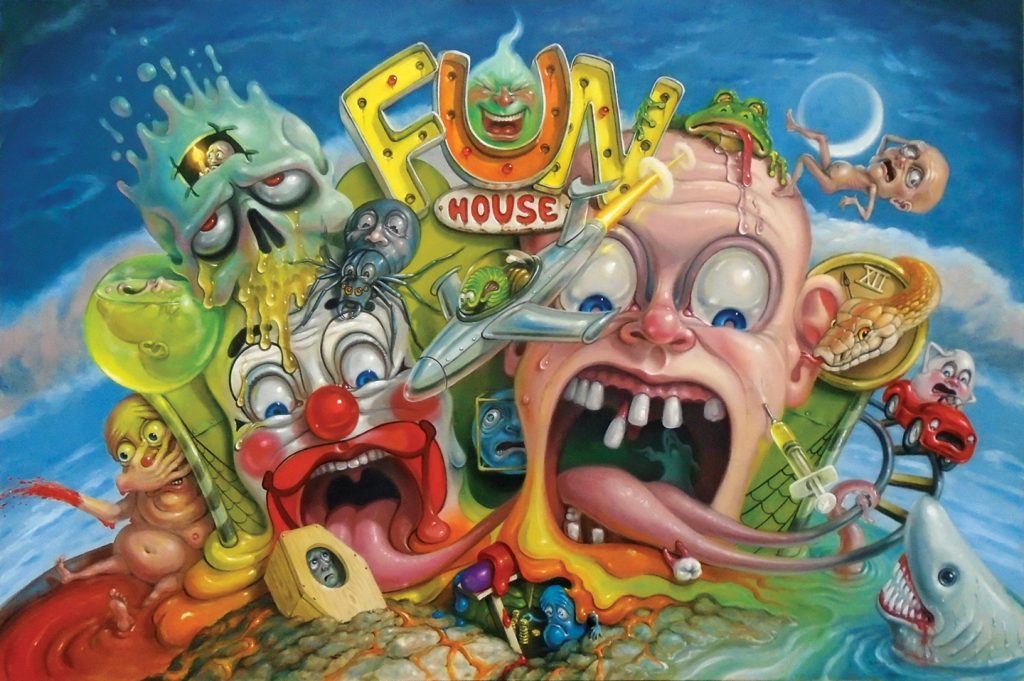

Add comment